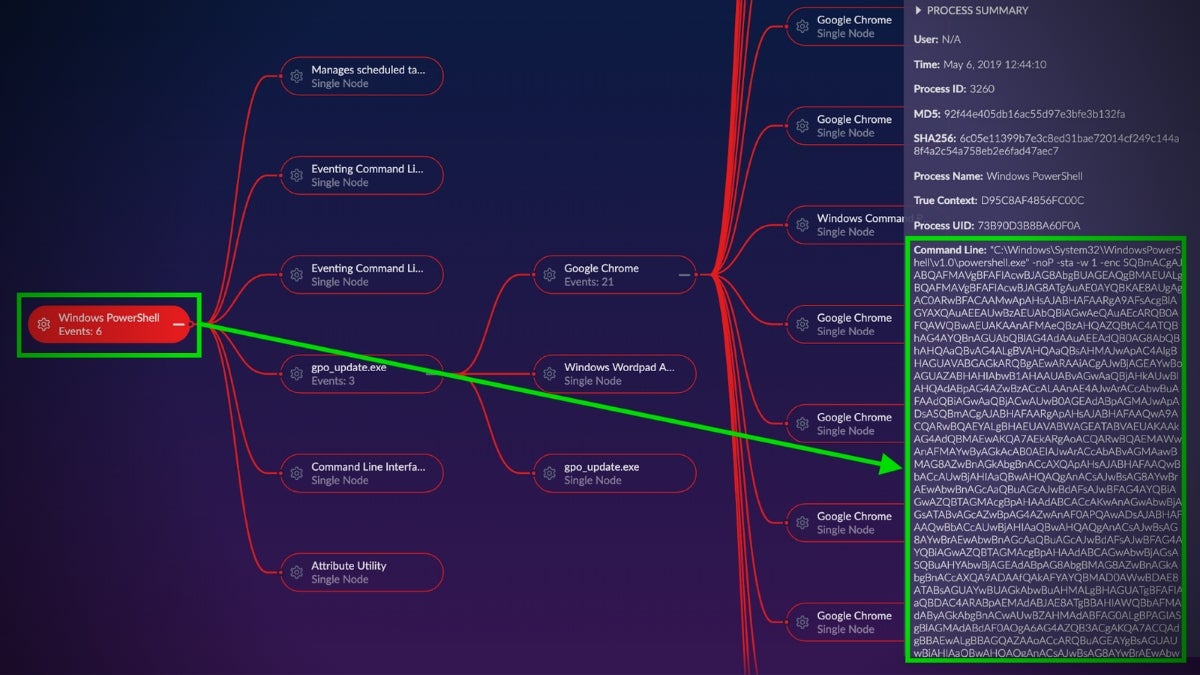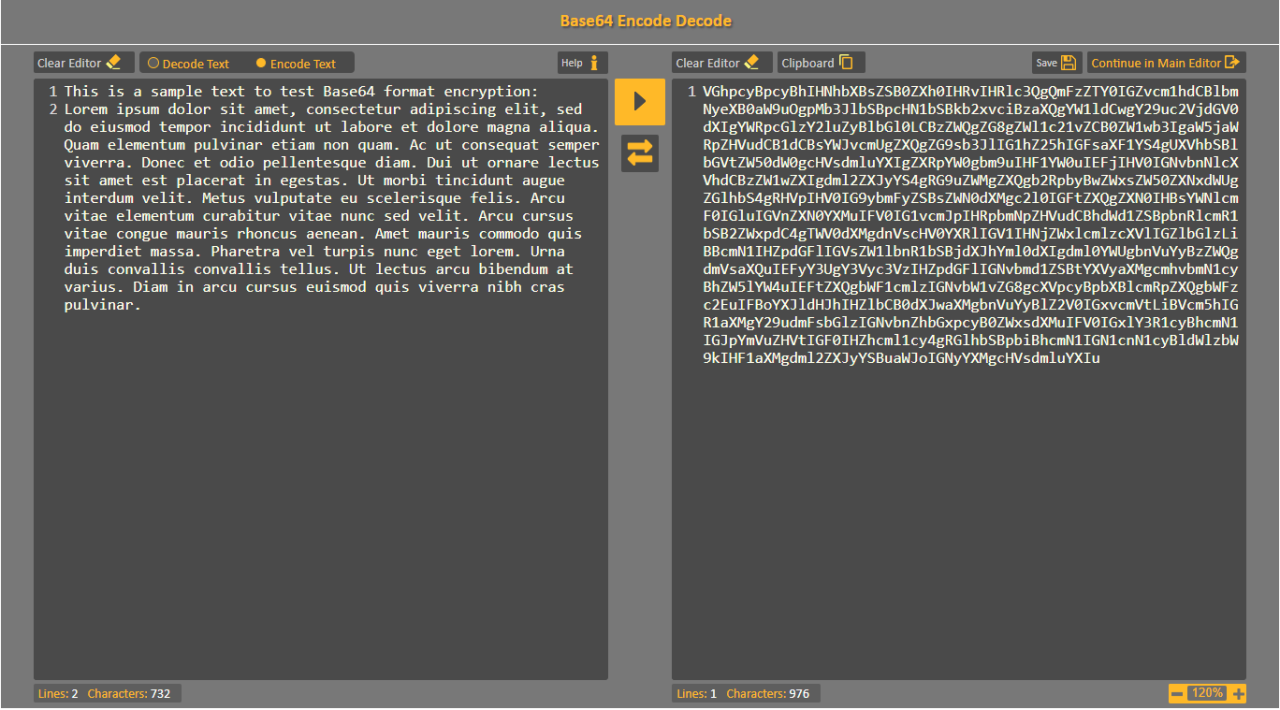Trying to decrypt a base64 encoded string containing email and password? Sounds like a thrilling spy novel, doesn’t it? But before you picture yourself in a dimly lit room, cracking codes with a furrowed brow and a half-eaten sandwich, let’s delve into the surprisingly straightforward (and slightly less glamorous) reality of Base64 decoding. We’ll explore the mechanics of this encoding scheme, the challenges of extracting sensitive data, and, crucially, the ethical and legal minefields you’ll want to avoid.
Think of it as a crash course in digital espionage – without the explosions.
This guide will walk you through the process of decoding Base64 strings, providing practical examples and code snippets in Python and JavaScript. We’ll cover everything from identifying email and password segments within the encoded data to understanding the security implications of this method and exploring safer alternatives. Get ready to unravel the mysteries of Base64, one byte at a time (but responsibly, of course!).
Understanding Base64 Encoding

Base64 encoding, at its heart, is a clever way to represent binary data (like the bytes that make up your email and password) using only printable ASCII characters. Think of it as a secret code, but one that’s easily deciphered with the right key (or rather, algorithm). It’s incredibly useful for situations where you need to transmit data through systems that might not handle all character types gracefully – like sending email attachments or embedding data in web pages.Base64 encoding works by grouping the binary data into sets of six bits.
Each six-bit group is then mapped to a specific character from a 64-character set consisting of uppercase letters (A-Z), lowercase letters (a-z), digits (0-9), and two special characters, typically “+” and “/”. If the original data isn’t a multiple of six bits, padding characters (“=”) are added to the end of the Base64 string to ensure its length is a multiple of four characters.
Decoding reverses this process, converting the characters back into their six-bit binary equivalents and then reassembling the original binary data.
Base64 Encoding and Decoding Process
The conversion from a string to its Base64 representation involves several steps. First, the string is converted into its binary representation (a sequence of 0s and 1s). Then, these bits are grouped into sets of six. Each six-bit group is then looked up in a table (the Base64 encoding table) to find the corresponding character. These characters are concatenated to form the Base64 encoded string.
Decoding reverses this process, looking up each character in the table to get its six-bit representation, and then combining these bits to reconstruct the original binary data, which is then converted back into a string. The process is surprisingly straightforward, though the underlying bit manipulation can be a bit intricate.
Base64 Encoding Examples
The following table demonstrates several examples of Base64 encoding and decoding. Note that the length of the Base64 encoded string is always a multiple of 4 characters due to the padding.
| Original String | Base64 Encoded String | Decoded String | Notes |
|---|---|---|---|
| Hello, World! | SGVsbG8sIFdvcmxkIQ== | Hello, World! | Standard example. Note the padding “==” |
| This is a test. | VGhpcyBpcyBhIHRlc3Qu | This is a test. | Shorter string, still a multiple of 4 characters after encoding. |
| 12345 | MTIzNDU= | 12345 | Numeric string encoding. |
| A | QQ== | A | Single character encoding demonstrates padding. |
Identifying Email and Password within Base64 Data: Trying To Decrypt A Base64 Encoded String Containing Email And Password
So, you’ve got a Base64-encoded string, and you suspect it holds a juicy email and password combo. Think of it as a digital treasure map, but instead of “X marks the spot,” it’s “Base64 marks the… well, you get the idea. The challenge now is deciphering the cryptic message and finding the hidden loot. This isn’t about cracking encryption; we’re focusing on the
location* of the email and password within the already decoded data.
The process of identifying the email and password within the decoded Base64 string isn’t a straightforward “find and replace” operation. It’s more like searching for needles in a digital haystack, where the needles might be cleverly disguised as something else entirely. The difficulty lies in the lack of a universally standardized format for storing this information. The format is entirely dependent on the application or system that generated the encoded string.
Delimiter Identification, Trying to decrypt a base64 encoded string containing email and password
Finding email and password segments often relies on identifying delimiters – the punctuation marks or characters that separate different data fields. Common delimiters include colons (“:”), semicolons (“;”), commas (“,”), and even tabs or spaces. Sometimes, the email and password might be embedded within a larger JSON or XML structure, providing more structured delimiters like curly braces (“”), square brackets (“[]”), or angle brackets (“<>“).
Imagine a treasure map with specific symbols marking the path to the treasure; these delimiters are like those symbols. For example, a string might look like this after decoding: “email:user@example.com;password:SecretPassword123”. The colons and semicolons clearly separate the data fields. However, this is not always the case. Many times, you will need to rely on context and patterns to guess the delimiters.
Pattern Recognition
If delimiters are absent or ambiguous, you might need to employ pattern recognition techniques. Email addresses typically follow a predictable pattern: `something@something.something`. Passwords, on the other hand, are less predictable but often contain a mix of uppercase and lowercase letters, numbers, and symbols. Regular expressions (regex) are incredibly powerful tools for identifying these patterns. A well-crafted regex can help isolate likely email and password candidates even without explicit delimiters.
Wrestling with this base64 encoded string, hoping it’s not my ex’s password – I need a break! Maybe I should check out accessible hiking trails near me for wheelchair users to clear my head. Then, back to deciphering this digital enigma; it’s either a treasure trove of secrets or just someone’s spam folder.
Think of it as using a metal detector to find the hidden treasure, instead of just relying on the map. For instance, a regex like `[a-zA-Z0-9._%+-]+@[a-zA-Z0-9.-]+\.[a-zA-Z]2,` might effectively isolate an email address within a larger text. However, remember that regex alone cannot guarantee accuracy.
Challenges in Extracting Sensitive Data
Extracting sensitive data from obfuscated Base64 strings presents several challenges. The biggest hurdle is the lack of standardization. There’s no single, universally accepted format for storing email and password combinations in Base64-encoded strings. The format is entirely dependent on the system or application that generated the string. Further complicating matters, the data might be encrypted or further obfuscated before Base64 encoding, adding another layer of complexity.
Imagine trying to find treasure on a map that has been ripped, folded, and partially burned – quite a challenge! Moreover, even with successful extraction, ensuring the data is actually an email and password and not just similar-looking text requires careful consideration and validation. Contextual analysis, combined with the methods mentioned above, is crucial for reliable results.
Wrestling with this base64 encoded string, hoping it’s not my grandma’s secret cookie recipe (or worse, my email and password!). My brain feels as scrambled as those ancient runes I saw on a hike – speaking of which, I need a break; check out these nearby hiking trails with historical significance or landmarks for some fresh air.
Back to deciphering this digital enigma; maybe a hike will clear my head enough to crack this code.
Decryption Techniques
So, you’ve got a Base64 encoded string, and you suspect it holds the keys to someone’s email and password (don’t worry, we’re assuming you have permission!). Let’s crack this code like a digital egg. Base64 decoding is thankfully not rocket science, but it’s important to understand the process and its limitations.The process of decoding a Base64 string involves reversing the encoding scheme, transforming the string of characters back into its original binary representation.
This is usually straightforward, but remember, Base64 only encodes data; it doesn’t encrypt it. The underlying data remains vulnerable if it wasn’t encrypted beforehand.
Base64 Decoding in Python and JavaScript
The beauty of Base64 is its simplicity and ubiquity. Most programming languages offer built-in or readily available libraries to handle the decoding. Let’s illustrate with Python and JavaScript, two popular choices for web development and scripting.
- Python: Python’s `base64` module makes decoding a breeze. The `b64decode()` function handles the heavy lifting. For example, if your Base64 string is stored in a variable called `encoded_string`, you would use the following code:
import base64
encoded_string = "SGVsbG8gV29ybGQh" # Example Base64 string
decoded_bytes = base64.b64decode(encoded_string)
decoded_string = decoded_bytes.decode('utf-8')
print(decoded_string) # Output: Hello World!
- JavaScript: JavaScript’s `atob()` function performs the Base64 decoding directly within the browser or Node.js environment. Assuming your Base64 string is in a variable named `encodedString`, the decoding is equally straightforward:
let encodedString = "SGVsbG8gV29ybGQh"; // Example Base64 string
let decodedString = atob(encodedString);
console.log(decodedString); // Output: Hello World!
Efficiency and Security of Decoding Methods
Both Python and JavaScript offer efficient Base64 decoding methods. The built-in functions are optimized for speed and generally handle large strings without significant performance issues. However, it is crucial to understand that Base64 decoding itself doesn’t add any security. The security of the decoded data depends entirely on how the original data was protected
-before* Base64 encoding.
If the original data was sensitive (like an email and password), it should have been encrypted using a robust encryption algorithm
-before* being Base64 encoded. Base64 is just a way to safely transmit binary data through text-based systems; it’s not a security measure in and of itself. Think of it as putting a gift in pretty wrapping paper – the paper protects it from minor damage, but a determined thief can still get to the present inside.
Wrestling with this base64 encoded string, hoping it’s not my ex’s revenge – it’s definitely an email and password combo. My sanity is starting to fray; maybe I need a tes kesehatan mental before I accidentally unleash a digital kraken. Seriously though, this decryption is proving tougher than expected, and I’m starting to suspect it’s intentionally obfuscated.
Encryption is the equivalent of a strong lock on the gift box.
Security Risks and Mitigation

Thinking Base64 encoding is a foolproof way to protect your email and password is like using a flimsy cardboard box to safeguard the crown jewels. It offers a superficial layer of obfuscation, but anyone with a basic understanding of encoding can easily crack it. The real danger lies not in the weakness of Base64 itself, but in the false sense of security it provides.
Base64 encoding simply translates data into a different format; it doesn’t encrypt it. The encoded string is easily reversible, revealing your sensitive information to anyone who intercepts it. This is especially problematic if the data is stored in a database or transmitted over an insecure network. Imagine a scenario where a hacker gains access to your database – they’ll find your “protected” email and password sitting there, waiting to be decoded with a simple online tool.
This is why relying on Base64 alone is a recipe for disaster.
Security Risks of Using Base64 for Sensitive Data
Storing email addresses and passwords encoded with Base64 presents several significant security vulnerabilities. The primary risk is the ease with which the encoding can be reversed, exposing the plaintext data to unauthorized access. This exposes users to account compromise, identity theft, and other serious consequences. Furthermore, even if the Base64-encoded data is stored securely, the risk of a data breach remains; if the database is compromised, the encoded information can be easily decoded.
The inherent weakness of Base64 as a security mechanism means that it offers negligible protection against determined attackers.
Secure Alternatives to Base64 Encoding
Instead of relying on Base64, robust encryption algorithms are crucial for safeguarding sensitive data. Strong encryption techniques like AES (Advanced Encryption Standard) with a sufficiently long key length (e.g., 256-bit) render the data unintelligible without the correct decryption key. This ensures that even if the encrypted data is intercepted, it remains protected. Furthermore, the use of hashing algorithms, such as bcrypt or Argon2, for password storage is vital.
These algorithms create one-way hashes, meaning the original password cannot be recovered from the hash, even if the hash itself is compromised. This protects against password leaks, even if the database is breached.
Strong Password Policies and Encryption Techniques
Implementing strong password policies and utilizing robust encryption are paramount for protecting sensitive data. Weak passwords are easily cracked, rendering even the strongest encryption useless. Therefore, it’s crucial to enforce policies that mandate long, complex passwords with a mix of uppercase and lowercase letters, numbers, and symbols. Regular password changes also reduce the window of vulnerability. Furthermore, multi-factor authentication (MFA) adds an extra layer of security, requiring users to provide multiple forms of authentication before accessing their accounts.
This makes it significantly harder for attackers to gain unauthorized access, even if they obtain passwords through other means.
A strong password policy coupled with robust encryption is the only way to ensure that sensitive information remains protected. Failing to do so leaves users vulnerable to a wide range of security threats.
Best Practices for Secure Password Management
Implementing a robust password management strategy is crucial for mitigating the risks associated with storing and managing sensitive data. This involves a multi-pronged approach encompassing both technical and user-centric measures. Here are some best practices:
- Use strong, unique passwords for each account. Avoid reusing passwords across different platforms.
- Employ a password manager to generate and securely store complex passwords.
- Enable multi-factor authentication (MFA) wherever possible.
- Regularly update passwords, particularly for high-value accounts.
- Educate users about phishing scams and other social engineering tactics.
- Implement strong password policies within your organization, enforcing minimum length, complexity requirements, and regular password changes.
- Regularly audit and review security policies and procedures to ensure they remain effective.
Ethical Considerations

Let’s be honest, fiddling with someone’s Base64-encoded email and password is about as ethical as a three-legged cat in a ballet recital – it’s just not going to end well. Attempting to decrypt such data without explicit authorization treads a very fine line, and frankly, that line is drawn with a very sharp legal pencil.
The ethical implications are, to put it mildly, significant. We’re talking about accessing someone’s private information – information that they trust will remain private. Doing so is a breach of trust, a violation of their privacy, and potentially a gateway to far more serious crimes. It’s not just about the technical act of decryption; it’s about the fundamental respect for another person’s digital life and personal boundaries.
Imagine someone snooping through your diary – it’s the same principle, only with potentially far-reaching consequences in the digital realm.
Legal Ramifications of Unauthorized Access
Unauthorized access to and use of someone’s email and password can lead to severe legal repercussions. Depending on the jurisdiction and the specifics of the case, this could range from hefty fines to imprisonment. Crimes like identity theft, fraud, and unauthorized access to computer systems are all very real possibilities. The penalties aren’t just financial; a criminal record can severely impact future opportunities and personal reputation.
Laws like the Computer Fraud and Abuse Act (CFAA) in the United States, and similar legislation in other countries, provide a robust legal framework to prosecute such offenses. Think of it as a digital version of breaking and entering – only the consequences can be much more widespread and damaging.
Ethical Dilemma Scenario
Imagine you find a Base64-encoded string on a discarded flash drive. Your curiosity gets the better of you, and you manage to decrypt it, revealing someone’s email and password. You’re tempted to use this information to access their email for a “quick peek” – maybe to see if they’ve left any juicy gossip lying around. However, you know that doing so is wrong.
This situation perfectly illustrates the ethical conflict: the allure of forbidden knowledge versus the clear moral and legal implications of accessing private data without consent. The potential harm – from personal embarrassment to financial loss – far outweighs any perceived benefit. The “quick peek” could easily snowball into a much larger problem, causing significant distress and damage to the victim.
The ethical choice is clear: delete the information and resist the temptation.
Practical Example
Let’s get our hands dirty and decrypt something! We’ll tackle a simulated Base64 encoded string containing a (fake) email and password. Remember, attempting to decrypt Base64 encoded data without authorization is unethical and potentially illegal. This example is purely for educational purposes.
This section will guide you through the process of decrypting a sample Base64 string, revealing the hidden email and password. We’ll use a simple, straightforward approach, focusing on the core mechanics of Base64 decoding.
Base64 Decoding Process
The following steps illustrate how to decrypt a sample Base64 encoded string. This process assumes you have a Base64 decoding tool or library available (many programming languages provide built-in functions for this).
- Obtain the Base64 Encoded String: Our sample string is:
c2FtcGxAdGVzdC5jb206cGFzc3dvcmQxMjM= - Use a Base64 Decoder: Most programming languages offer built-in functions for Base64 decoding. For example, in Python, you’d use the
base64.b64decode()function. In JavaScript, you’d use theatob()function. Many online tools are also available. - Decode the String: Applying the Base64 decoder to our sample string,
c2FtcGxAdGVzdC5jb206cGFzc3dvcmQxMjM=, yields:sample@test.com:password123 - Separate Email and Password: The decoded string clearly shows the email address (
sample@test.com) and password (password123) separated by a colon (:).
Verifying Data Integrity
After decoding, it’s crucial to verify the integrity of the extracted data. Since this is a simulated example, we can visually inspect the results. In a real-world scenario, you might compare checksums or use cryptographic hashing techniques to ensure the data hasn’t been tampered with during transmission or storage. For example, you could calculate a hash of the original Base64 string and compare it to a hash of the decoded data.
If they match, it provides strong evidence of data integrity. However, remember that even with verification, if the original data was compromised, the verification only confirms the integrity of the
-compromised* data.
Ultimate Conclusion

So, you’ve journeyed through the world of Base64 decoding, learned to wield the power (and responsibility) of decrypting encoded strings, and hopefully avoided any digital handcuffs along the way. Remember, while Base64 itself isn’t encryption, its use for sensitive data is a risky game. Always prioritize strong security practices, and remember that ethical considerations should guide your actions. Happy decoding (responsibly!), and may your passwords remain ever-secure.
